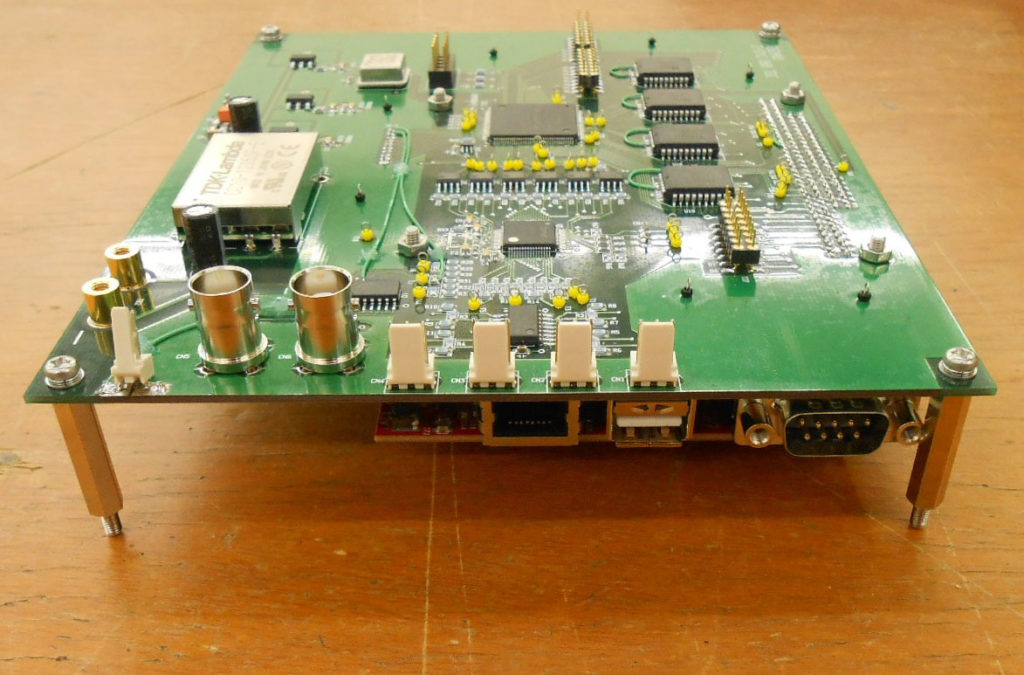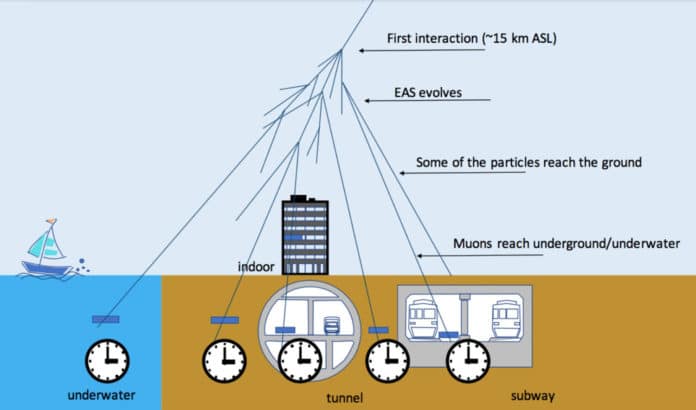Precise time synchronization is an essential technique required for financial transaction systems, industrial automation and control systems, and land and ocean observation networks. However, the time synchronization signals based on the global positioning system (GPS) are sometimes unavailable or only partially available in indoor, underground, and underwater environments.
As a solution, scientists at the University of Tokyo introduced the cosmic time synchronizer that works by synchronizing devices around cosmic ray events detected by those devices. This could bring accurate timing abilities to remote sensing stations or even underwater places that other methods cannot serve.
Professor Hiroyuki Tanaka from Muographix at the University of Tokyo devised and tested a way to synchronize multiple devices. Hence, they agree on the time that uses cosmic rays from deep space. Appropriately, it’s called cosmic time synchronization (CTS).
Tanaka said, “It’s relatively easy to keep time accurately these days. For example, atomic clocks have been doing this for decades now. However, these are large and expensive devices that are very easy to disrupt. This is one reason I have been working on an improved way to keep time. The other is that related to time measurement, position measurement could also be made better. So really, CTS is a precursor to a potential replacement for GPS, but that’s still a little further down the line.”

Cosmic Time Synchronization (CTS) works thanks to cosmic rays from deep space that strike the atmosphere around 15 kilometers up, creating showers of particles, including muons. The muons travel at nearly the speed of light, reaching the Earth practically instantly, easily penetrating water or rock and spreading out over a few square kilometers as they go.
Under the same particle shower, multiple CTS-enabled sensors can detect the incoming muons, which will have a unique signature to the cosmic ray event that generated them.
CTS devices can communicate with one another and synchronize their clocks according to when the cosmic ray event occurred by transmitting this information. CTS devices can communicate in real-time because ultrahigh-energy cosmic ray impacts occur frequently enough, around a hundred times per hour over every square kilometer of Earth.
Tanaka said, “The principle is robust, and the technology, detectors, and timing electronics already exist. So we could implement this idea relatively quickly. Satellite-based time synchronization has so many blind spots at the poles, in mountainous regions, or underwater, for example, and CTS could fill these gaps. The problem, as with any new technology, is one of adoption. Thomas Edison lit up Manhattan starting with a single light bulb. Perhaps we should take that approach, starting with a city block, then a district, and eventually, we’ll synchronize the whole of Tokyo and beyond.”
Journal Reference:
- Hiroyuki K. M.Tanaka, “Cosmic time synchronizer (CTS) for wireless and precise time synchronization using extended air showers,” Scientific Reports: April 30, 2022, DOI: 10.1038/s41598-022-11104-z
